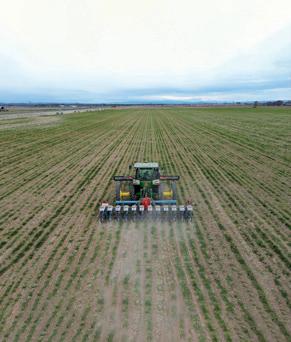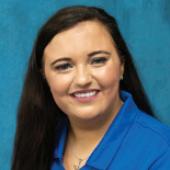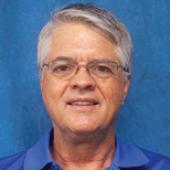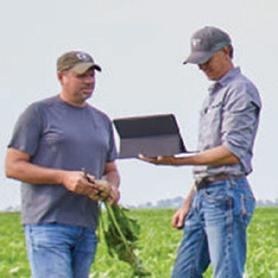
INSIDE Research seeks to determine the best use of fungicide for cercospora pg. 12 MAY 2022 PRESORTED STD U.S. POSTAGE PAID Fargo, N.D. Permit No. 99
MIDWEST STRUGGLES WITH COLD, WET CONDITIONS, WHILE WEST MOVES AHEAD | PAGE 8
PLANTING PROGRESS
Every Step of the Way
Growers spend agreat deal of time looking to the future.

Whether preparing for harvest, managing for weather or setting rotations, constant improvement is the goal. Yetitisinthe rare moments when we glance back that our perspective can shift. The big picture suddenly snaps into focus—the life you’ve built and the legacy that will pass to those who come behind you.
Through all the seasons and across generations, Crystal brand beet seed has been there beside you. We’ve shared in the journey by offering solutions that push yields higher whilemanaging pests and disease. It’sapartnership that is focused on innovating and adapting for the future, even aswe occasionally pause to appreciate the present.
13




PLANTING PROGRESS
PLANTING CRAWLS ALONG IN THE MIDWEST BUT MOVES SMOOTHLY IN THE WEST BY ANN
 BAILEY
BAILEY
RESEARCH REPORT
RESEARCH LOOKS AT WHEN FUNGICIDES SHOULD BE APPLIED TO FIGHT CERCOSPORA BY ANN
BAILEY
CHARLEY RICHARD
SHARING A LIFETIME OF SUGAR KNOWLEDGE, FROM CANE AND BEETS BY LAURA RUTHERFORD 20
SUGARBEETS AFTER CORN
A TEST PLOT IN MINNESOTA WILL LOOK AT FOLLOWING CORN WITH SUGARBEETS BY JEFF BEACH
Seeds donations
ON THE COVER
10 International Sugar Beet Institute report 22 Write Field 23 Photos from the Field
Brad Griff, executive director of the Snake River Sugarbeet Growers Association, contributed this photo of a grower planting sugarbeets into cover crops. The Snake River association represents growers in Idaho, Washington and Oregon, where planting has been going far better than for growers in places where it has remained colder and wetter than normal, like North Dakota, Minnesota and Michigan.
PUBLISHER KATIE PINKE 701-261-9494 KPINKE@AGWEEK.COM
EDITOR JENNY SCHLECHT 701-595-0425 JSCHLECHT@AGWEEK.COM
LAYOUT DESIGN SARA SLABY FCCSPECIALSECTIONS @FORUMCOMM.COM
ADVERTISING ADS@AGWEEK.COM
SUBSCRIBER INFORMATION MEMBERSERVICES @SUGARBEETGROWER.COM 1-800-274-5445





Serving
Sugar
North
Advertising
The Nation’s Sugarbeet Community Since 1963 Volume 61 Number 2 May 2022
Publications | Agweek 101 5th Street N | Fargo, ND 58102 The Sugarbeet Grower is published by Agweek, a division of Forum Communications.
American sugarbeet producers receive the magazine on a complimentary basis. Annual subscription rates are $12.00 domestic and $30.00 for foreign subscribers.
in The Sugarbeet Grower does not necessarily imply endorsement of a particular product or service by the publisher. VISIT US ONLINE! Agweek.com/Sugarbeet
CONTENTS
FEATURED INSIDE determine the best use fungicide cercospora PLANTING PROGRESS MIDWEST STRUGGLES WITH COLD, WET CONDITIONS, WHILE WEST MOVES AHEAD PAGE
TABLE OF
8
12
PLUS...
6
7 ACH
4 Editor’s note 5 Researchers honored
Dateline Washington
2 MAY 2022 AGWEEK.COM/SUGARBEET FACEBOOK.COM/SUGARPUB | INSTAGRAM.COM/SUGARPUB | TWITTER.COM/SUGARPUB 3
Cr ystalbrand is aregistered trademarkofAmerican Cr ystalSugar Companyand is used with per mission
Good
Come Fr om Common Gr ound ™
Things
CONSIDER SUPPORTING VITAL AG NEWS WITH AN AGWEEK
SUBSCRIPTION
BY JENNY SCHLECHT
In Sugarbeet Grower Magazine, we cover sugarbeets. We cover the industry, the farmers, the policies. We look at research, diseases and technologies and all the things that can impact your sugarbeet operation.



But we know that sugarbeets aren’t your sole focus on your farm.
For more than a year, Sugarbeet Grower Magazine has been brought to your mailboxes by Agweek. And at Agweek, we cover the rest of the news and information you need for your operation, along with sugarbeets.

Agweek got its start in 1985 with a strong focus on news and market information that you couldn’t, at that time, get anywhere else in the northern Plains. Over the decades, our focus has remained on giving farmers, ranchers and agribusinesses information you won’t find in any other news source.

We go beyond just disseminating press releases and reporting inch-deep news that you’ll find elsewhere. We have experienced reporters, most of whom have personal backgrounds in agriculture, who can put ag news into perspective. We
RESEARCHERS RECOGNIZED FOR THEIR WORK BY RED RIVER VALLEY SUGARBEET GROWERS ASSOCIATION
 BY ANN BAILEY
BY ANN BAILEY
The Red River Valley Sugarbeet Growers Association has honored Researchers Norm Cattanach and Mark Bloomquist with the Sugarbeet Distinguished Service award.

Cattanach, a North Dakota State University sugarbeet research specialist, and Bloomquist, Southern Minnesota Beet Sugar Cooperative research director, received the awards at the annual American Crystal Sugar Co. Research and Reporting Session held in December 2021.
This is the second time during Cattanach’s long association with the sugarbeet industry that he has received the Distinguished Service award. The first was in 2000.
Cattanach’s career in sugarbeet research began in 1982 when he joined the North Dakota State University soil science department. During part of his career, Cattanach worked with then-soil scientist Joe Giles on a variety of sugarbeet research projects including seedbed preparation, tillage methods and residue management. Later, Cattanach
CONTINUED ON PAGE 9
also have a variety of contributors who can broaden your perspective and give you ideas on topics like farm finances, succession planning and markets.
While Agweek is based in the northern Plains and upper Midwest, the news we report is strongly tied to agriculture across the country. If you grow corn or soybeans or raise cattle, there is news for you in Agweek. If you are looking for new ideas on how to keep your farm in the black or you’re wondering how policy decisions in D.C. impact you, there is news for you in Agweek.
If you’re interested in the business of agriculture, visit https://www.agweek. com/subscribe to learn about options for getting your ag news from Agweek, whether that’s in our weekly printed magazine or on our website, where you also can watch episodes of AgweekTV, our award-winning weekly agriculture show, from wherever you are. Visit https:// www.agweek.com/newsletter to sign up for our email newsletters, including our Sugarbeet Grower newsletter. The vital reporting our team does isn’t possible without the support of subscriptions.
We hope you’ll join us!
J47-M ™WeldedStainless SteelTubingfor SugarProducers


Driventobethetechnical tubingexpertforthesugar industr y– manufacturing qualityspecialtytubingfor evaporators, vacuumpans, juicepre-heaters and more Milltestreportsprovided.

WeldedStainless TubingGrades: A249-439, A249-304/304L, and A249-316/316L

2021WINNERTUBEANDPIPE PRODUCEROFTHEYEAR
MikeJamison:918-630-0982
mjamison@webcotube.com
Jerri Lauderdale:918-241-1037
jlauderdale@webcotube.com
www.webcotube.com
Jenny Schlecht is the editor of Agweek and Sugarbeet Grower Magazine. She lives on a farm and ranch in Medina, North Dakota, with her husband and two daughters. She can be reached at jschlecht@agweek.com or 701-595-0425.

4 MAY 2022 AGWEEK.COM/SUGARBEET
Agweek brings you Sugarbeet Grower Magazine, but our reporting expands far beyond sugarbeets. Mikkel Pates / Agweek file photo
DONATE $10,000 TO A NON-PROFIT ORGANIZATION


IN A CUSTOMER'S COMMUNITY
 BY ANN BAILEY
BY ANN BAILEY
A new program launched by ACH Seeds will donate $10,000 to select nonprofit organizations in the communities in which the company's Crystal Brand Sugarbeet Seed is sold.

DATELINE WASHINGTON




As the world recoils from the Russian atrocities against the people of Ukraine, it is causing countries to reflect on long held ideas about trade and foreign interdependence. For decades, global leaders felt that by binding countries together economically we could reduce conflict, avoid costly wars, and stem major migration of people fleeing conflict. This has been a founding principle for the multilateral trade agreements and a multitude of bilateral trade agreements around the world.
One senior European official recently explained the current dilemma quite well. “We thought interdependence, connectiveness would be conducive to stability, because we had correlating interests. Now, we’ve seen this is not the case. Russia was highly connected with Europe, a globalized country. Interdependence, we’ve now seen, can entail severe risks, if a country is ruthless enough… We have to adapt to a situation that is absolutely new.”
The war in Ukraine has only increased global supply chain disruptions for both inputs and goods. Washington continues to work towards mitigating this and other disruptions. U.S. Agriculture Secretary Tom Vilsack and the House and Senate Agriculture committees know full well


the challenges farmers are facing across the board on availability of inputs and skyrocketing costs. This message was delivered to hundreds of congressional offices during our virtual visits in March. None of these issues have quick, easy, or cheap solutions waiting to be executed. No stone is being unturned.
Inflation has raised its ugly head and will likely be with us for a good while. Demand for goods that go unmet due to a long list of interconnected challenges in the supply chain. Again, these are the aftershocks of a disjointed economy through a long pandemic. Higher interest rates now become a much bigger issue for industries, like agriculture, that rely on credit to produce its products. The structure of future farm policy will require enhanced safety nets for commodities. This will be a tough issue to manage.
Imports: Each month USDA monitors supply and demand for sugar. From time-to-time it makes various adjustments on imports based on expected demand, sugar production, beet storage, and processing of beet and cane. April is typically when the last import adjustment is made for the fiscal year. This year in April, domestic ending stocks for FY 2022 (Sept. 30) were projected to be at 12.5%, which is lower than the 13.5 -15.5% range
Luther Markwart has been the executive vice president of the American Sugarbeet Growers Association since 1982. Luther can be reached at lmarkwart@ americansugarbeet.org.

they use to manage the program. Imports were increased by 221,706 short tons raw value to make sure the market was adequately supplied. Typically, not all the sugar allowed actually comes in. We are closely monitoring any further steps USDA may be considering in terms of adding additional sugar to the market this year.
Politics: Over the course of May and June, 30 states will conduct their party primaries. It will give us a much clearer view of the issues and the players who will influence the November elections. This is a very exciting time to see how political strategies play out as voters cast ballots. Throughout this time we will be talking with members of Congress and candidates to understand local dynamics across our nation. This will be the political environment we will need to pass a farm bill in, and it will be critically important to understand members’ motivations.
The program, called “Homegrown Giving,” was launched this year in Michigan and in 2023 will be put in place in North Dakota, Minnesota and Montana.
Growers, industry experts and community members can nominate nonprofit organizations for the $10,000 award, and a panel made of sugarbeet farmers and ACH seed employees will choose the winners.
This year, the program is available in the Great Lakes growing area of Michigan, made up of 14 counties, including Arenac, Mecosta and Saginaw.


Nominations can be made on an online application forum to https://www. homegrowngiving.com.
The Homegrown Giving program is a way that ACH Seeds can make a positive impact on communities, said Andy Finkral, ACH Seeds national sales leader.
“We live and work in these communities where we sell sugarbeet seed,” Finkral said. ”We want to give back.”
Nominations for the program could vary from a volunteer fire department that is remodeling its firehall to a 4-H club that needs to buy cattle for members to show, Finkral said.
The program nominations will close on June 30, 2022, and the winner will be announced this fall.
Although the program won’t be available in Montana, Minnesota and North Dakota until 2023, ACH Seeds customers in those states did have an opportunity to be part of a trivia contest the company held during the American Sugarbeet Growers Association’s annual meeting in Scottsdale, Arizona, Jan. 30-Feb. 1, 2022.


Kyler Jonsson, a 12-year-old boy from Savage, Montana, won the trivia contest, which ACH Seeds held during a reception in which the company shared information about the Homegrown Giving contest and highlighted its potential impact on communities.
Kyler, who annually attends the meeting with his parents and older brother, answered 21 of 24 sugarbeet related questions correctly. He chose the Savage Public School industrial
TRADE AND ECONOMIC INTERDEPENDENCE PROVE
MARKWART
TO NOT BE A MATCH FOR RUTHLESS INTENTIONS
LUTHER
Executive Vice President American Sugarbeet Growers Association
SUGARBEET
SEED COMPANY’S PROGRAM WILL
22 6 MAY 2022 AGWEEK.COM/SUGARBEET FACEBOOK.COM/SUGARPUB | INSTAGRAM.COM/SUGARPUB | TWITTER.COM/SUGARPUB 7 Michig an Mik e, 1-810- 705-0297 Ida ho Ken t, 1-2 08-280-0 079 Neb raska 21 st Century Equipment Min nesota Midwest Machin ery Co. John Noorlo os 1-5 19-339-6 015 SER VICE Qua li ty used mac hi nes avai la bl e: Ti ger V8 -3 - Ti ger 6 20 - 22 - 24 - 28 - 30 inch heads Save time and maximize profit 30, 40 & 45 ton capacity 45 ton BIG BEAR Nor th America TIGER 6s Award-winning 2010 - 2018 www.r opan ortha merica.com info@r opanorth america .com MAUS 6
CONTINUED ON PAGE
WEATHER IN NORTHERN
PLAINS AND MICHIGAN
WHILE WESTERN U.S. GROWERS MAKE GOOD PROGRESS
BY ANN BAILEY

In the southern Red River Valley at MinnDak Farmers Cooperative in Wahpeton, North Dakota, rain and snow throughout April had pushed sugarbeet planting off for several more days, Mike Metzger, vice president of agriculture and research, said on May 2.
“We don’t have an acre in the ground,” he said. “It’s wet and cold.”
Total sugarbeet acreage at the cooperative this year is predicted to be 101,000.
The only time in the last decade that no sugarbeets were planted in April was in 2013, Metgzer said.
The forecast for the middle and end of the first week of May 2022 was for drier, warmer conditions, so he hoped that some farmers would be able to get into the field by the weekend.
“But who knows?” Metgzer said. ”As soon as we think the sun is going to shine, there’s another cloud.”
Father south, April snows and rains also delayed sugarbeet planting at Southern Minnesota Beet Sugar Cooperative in Renville, Minnesota, Besides being wet, soils also, generally, have remained cold.
Farmers planted about 1,500 acres rain, ranging from two-tenths of an inch to an inch, fell over the weekend of April 30, 2022, said Todd Geselus, the cooperative’s vice president of agriculture.
There’s still enough time to plant before concerns about being too late are raised, though, he said.

Wet soils or inundated fields are one issue keeping farmers from planting in North Dakota and other parts of the Midwest, while unusually cold soil temperatures also are a problem. Trevor Peterson / Agweek

“We’re getting a little later than normal, but not egregious by any stretch,” Geselius said. “We’ve planted until the end of May before.”
Like at the other cooperatives, farmers who grow sugarbeets for American Crystal Sugar Co., based in Moorhead, Minnesota, still were waiting in early May until soils dried and warmed so they could get in the field.
“We’d rather be wrapping up planting right now or done,” said Joe Hastings, general agronomist. However, during the past decade there have been several years — 2009, 2011, 2013 and 2014 — in which planting was delayed. The cooperative’s latest plant date, on average, during the past decade was 2014 when farmers started seeding on May 21.
When soils do start to dry, farmers will need to exercise patience to avoid “mudding” in the sugarbeets, which may result in replanting and further delay the growing season, Hastings said.

Barring additional rain, fields of farmers in the southern Red River Valley who grow sugarbeets for American Crystal Sugar
“We’re about 95% planted, coming down the homestretch,” said Brad Griff, Snake River Sugarbeet Growers Association executive director, said on May 3. The total acreage of farmers who are members of the association will be about 180,000, he said.
Like most years, some Snake River Sugarbeet Growers Association farmers will have to replant acres, he said. Replanting over the years has varied from about one-third of the total acreage to only a percent or two.
“From year to year, you never know what weather conditions you’re dealing with in the spring. It ping pongs back and forth, and can affect the first crop, Griff said. “It’s pretty typical for some growers to come back and replant some acres due to the frost or some cold weather. Sometimes it just doesn’t get the weather it needs.”
CONTINUED FROM
PAGE
collaborated with NDSU researchers Laura Overstreet and Amitva Chatterjee on projects.
Cattanach is best known in the Minnesota, North Dakota and eastern Montana sugarbeet industry for organizing and operating grower planter test stand clinics across the three states. He plans to retire in April.
Bloomquist’s career in agriculture was launched in 1990 when he was hired as an agriculturalist at Southern Minnesota Beet Sugar Cooperative in Renville, Minnesota. In 2008, he accepted a position at the cooperative as a production agronomist. As production agronomist, Bloomquist was responsible for a variety of agronomy projects, including Southern Minnesota Beet Sugar Cooperative official variety trials. Bloomquist was named research director at the Renville cooperative and at Spreckels Sugar in Brawley, California, in 2015.
Bloomquist’s collaboration with Emma Burt, MinnDak Growers
Cooperative research agronomist, and Tom Peters, NDSU Extension sugarbeet agronomist, helped secure an emergency exemption for Ultra Blazer. The exemption allowed farmers to use the post-emergence herbicide to control glysophosatetolerant broadleaf weeds.
Co. may be dry enough to plant the week of May 9, he estimated. Planting further north will proceed as those fields dry.
In Michigan, farmers who grow sugarbeets for Michigan Sugar Co. were about 20% finished with planting their total of slightly less than 150,0000 acres as of May 2, 2022, said James Ruhlman, Michigan Sugar Co. executive vice president.


Sugarbeet fields in Michigan, like in North Dakota and Minnesota, needed warmer temperatures and drier weather to improve soil conditions
This planting season is one of the latest in recent history, Ruhlman said. In 2021, about 80% of the company’s sugarbeets were planted by the end of April.
Although ideally the company would like to have half of its crop in the ground by mid-April, there’s still potential for good sugarbeet production if it is planted by early May, he said.
While planting in the northern Plains and Michigan was delayed by too much moisture, favorable weather conditions in

Bloomquist serves on the Sugarbeet Research and Education Board, American Society of Sugarbeet Technologists Board and the Minnesota Agricultural Fertilizer and Research and Education Council. 5
Cold, wet soil conditions kept sugarbeet farmers in the northern Plains and Michigan out of the field in April, while growers in Idaho made swift progress under mostly sunny skies.
DELAYS SUGARBEET PLANTING
Oregon, Washington and Idaho allowed farmers who are members of the Snake River Sugarbeet Association to nearly finish planting by April 30.
8 MAY 2022 AGWEEK.COM/SUGARBEET FACEBOOK.COM/SUGARPUB | INSTAGRAM.COM/SUGARPUB | TWITTER.COM/SUGARPUB 9 701-642-1181 valleybeetser vice .com 24 , 30 & 35 Ton Beet Car ts Eliminates Down Time ForAMoreEfficientHarvest 1/2” Plastic Wear Slides Many More OptionstoChoose Easy Access Doors at Frontand Back 42”,52” or 64” Belted Chain ForFaster Unloading HeavyTube FrameConstruction
The Red River Valley Sugarbeet Growers Association honored Mark Bloomquist and Norm Cattanach with the Distinguished Service Award. Agweek file photo
INDUSTRY INFLUENCERS
AT INTERNATIONAL SUGAR BEET INSTITUTE TALK ABOUT SUCCESSES, CHALLENGES FACING FARMERS
BY ANN BAILEY
The sugarbeet industry, like all sectors of production agriculture, faces a host of challenges, from supply chain interruptions, to high input costs, to rulemakers who increasingly are disconnected from agriculture, two spokesmen for the sugarbeet industry told farmers at the 60th Annual International Sugar Beet Institute held in Grand Forks
However, there also are positives such as sharing the industry’s successes with the policymakers, strong sugar prices and record domestic sugar production in 2021 that Luther Markwart, executive vice president of American Sugarbeet Growers Association and Rob Johannson, American Sugar Alliance director of economics and policy analysis, highlighted during their presentations
Markwart and Johannson gave keynote addresses on Wed., March 16, the first day of the ISBI, and will speak again on Thus., March 17. The event, which rotates between Grand Forks and Fargo, North Dakota, also features a trade show with sugarbeet equipment and inputs used in the crop’s production.
One of the successes the U.S. sugar industry had in 2021 was record production, despite growing season challenges, Johannson said. Rains late in the otherwise dry growing season boosted yields in the northern Plains, which earlier looked like they were going to be drought-reduced..



Whether moisture this spring will be adequate is a concern for some growers, and the majority of them will spend more money to grow and harvest their crops. The increased production costs means that farm income likely will be lower in 2022 than it was in 2021 when input costs were lower, Johannson said.

“We’re making the case in Washington, D.C., that you can’t just look at prices and say agriculture is in a strong situation,” Johannson said. “Last year was a high point.”
Besides higher production costs, federal assistance programs such as the Market Facilitation Program, the Coronavirus Food Assistance Program and the Small Business Administration’s Paycheck Protection Program, which added to farm income, no longer will be in place, Johannson noted.
“Those programs were wrapped up,” he said.
Educating Congressional Ag Committee members, including some who weren’t in office during the drafting of the last Farm Bill, is important because there likely will be an effort to change policies, decrease loan rates and eliminate feedstock availability and market allotments.
Markwart has emphasized to members of Congress that because the sugar industry is so efficient, there wasn’t a shortage of sugar, like there was of many other items on grocery shelves, during the coronavirus pandemic.
“Our great story was, ‘Members of Congress, you had a lot of worries in the last two years, and sugar wasn’t one of them,’” Markwart said.
Another way the sugarbeet industry has sought to tell its story is to have sugarbeets in the U.S. Department of Agriculture garden in Washington, D.C., so policy makers can view the crop.
During the next few months, sugarbeet industry advocates will work to put together the best Farm Bill possible, which will include keeping the existing policies in place and protecting crop insurance.
“I am optimistic about the future, but we have a lot of work to do,’” Markwart said.
HOWGLOBALTRADEISSUES,SUPPLY ANDDEMANDAREDRIVINGUP FERTILIZERCOSTS
AtTheMosaicCompany,ourmissionistohelptheworld growthefooditneeds.Wedoeverythingwecantooffer stablepricesand areliablesupplyofcriticalfertilizerto U.S.farmers.Infact,wesupplyabouthalfofthephosphate fertilizerappliedintheUnitedStates.Werecognizethat fertilizercosts haveincreaseddramaticallyoverthepast severalmonths,andfeel aresponsibilitytoshareour globalperspectiveonthiscomplexissue.
1)Fertilizerdemandfollowscommodityprices Demandforfertilizerhasincreasedasfarmerstryto captureadditionalrevenuefromhighercropprices, leadingtoanincreaseinbothplantedacres andfertilizer use.ThetradeoutlookforU.S.agriculturalcommodity exportsremainsstrongfor2022,asitwasin2021,and withhighergrainpricesdrivinghigherfertilizerdemand, higherfertilizercostshistoricallyfollow. Additionally,fertilizersaregloballytradedcommodities, justlikecorn,andasaresult,fertilizerpricesare influencedbymanyfactorssuchasincreasesin commoditypricesdrivingglobaldemandoffertilizers.

KIEL ROWFINDER
3) TradeandSupplydisruptionscontinue to reshapethemarket Othercountries announcedrestrictions offertilizerexports toensuretheirowndomesticsupply.Forexample,China, which accounts for over 25%ofglobal phosphate exports, imposedstrictexportcontrolsinOctoberoflastyearthat areslatedtoremaininplacethroughJune2022,drastically decreasing global supply and adding pressure to global prices,includingthoseintheU.S.Further,theentiresupply chainhasbeendeeplyimpactedbythedrasticincrease inimportandgroundtransportationcosts.Inaddition, severalatypicalweatherevents andmechanicalissues disruptedproductionatseveral facilitiesaroundtheworld, limitingsuppliesintheshortterm.
2)Thecostoffertilizerproductionhasincreased Higherinputcostssuchasammonia andsulfur,two criticalinputsforproductionofphosphates,were subjectto sharpincreasesin2021,andhaveseen further accelerationin2022.Priceshaveincreased 401% and198%,respectively,year-over-year.



InMarch 2021,theU.S.InternationalTradeCommissionissued acountervailingdutyonMoroccan andRussianphosphate fertilizerimportsduetounfairforeign subsidies.Irrespective ofthis,phosphateimportscameintotheU.S.atrecordlevels, andfrom amorediversifiedsupplybase.Infact,U.S.phosphate importsincreasedby1.7millionmetrictonsor73%year-overyearin2021andfromdoubletheamountofsuppliersrelative tohistoricalnorms.Thishasresultedin amorebalanced and fair-trademarket,whichcreates amorecompetitiveenvironment withtrustedandreliablesuppliersforAmericanfarmersand Americanagricultureinthelongterm.Phosphatepricesin theU.S. are currently$150to$200pertonless thaninother majoragriculturalmarketssuchasBrazil,India,andEurope. Assertionsthatthecountervailingduties aredrivingU.S. priceshigherare simplyuntrue.
Weunderstandthepressuresagretailersandfarmersarefacingduring thistumultuoustimeandthefrustrationthatcomeswithit.Wevalue ourlong-standingrelationshipsandarecommittedtoourretailpartners andtheirfarmercustomers,andwillcontinuetoofferthemtransparency andsupportastheynavigatetoughdecisionsahead.
10 MAY 2022 AGWEEK.COM/SUGARBEET FACEBOOK.COM/SUGARPUB | INSTAGRAM.COM/SUGARPUB | TWITTER.COM/SUGARPUB 11 THE
Automatically Controls: Hitch Steering • Hitch Depth Ground Contouring • Uses 1 Tractor SCV Call to schedule your pre-season inspection on your kic rowfinder Kiel Innovation Corporation, Crookston, MN 56716 218-280-3793 • kielinnovation@yahoo.com ©202 2T he Mos ai cCompa ny.A ll righ ts re served.
Research underway by Nathan Wyatt, USDA-ARS research plant pathologist, aims to fine tune when sugarbeets should be sprayed for cercospora leaf spot. Contributed / NDSU
SUGARBEET RESEARCH
AIMS TO TARGET WHEN FUNGICIDES SHOULD BE APPLIED
BY ANN BAILEY
A project underway by a research plant pathologist at U.S. Department of Agriculture’s Agricultural Research Service aims to find a way to more efficiently control cercospora leaf spot disease in sugarbeets and to reduce fungicide resistance to the pathogen.

The research of Nathan Wyatt, who works in the Edward T. Schafer Agricultural Research Center’s Northern Crop Science Laboratory in Fargo will be conducted during the next few years to fine tune the model that predicts when the risk of cercospora leaf disease is at a level at which growers can respond by spraying fungicides on the sugarbeets.
Mohamed Khan, North Dakota State University and University of Minnesota sugarbeet specialist, called cercospora leaf spot disease the most important problem facing growers during a talk at the Sugarbeet Research and Reporting Session held in January 2022.
The sugarbeet disease, which has potential to trim yields as much as 40% and reduce quality, results in major monetary losses and also decreases the storability of the crop, Peter Hakk, NDSU and U of M sugarbeet specialist, noted at the same research session.
For example, in 2016, cercospora leaf spot resulted in more than $140 million in sugarbeet losses in North Dakota and Minnesota, Hakk said.
Previous cercospora leaf spot disease research, based on the model known as Shane and Teng, was launched in 1984 and adjusted in 2003. That research identified weather conditions conducive to disease development.
“We’re looking at relative humidity and temperatures, at what threshold do you start to see cercospora leaf spot,” Wyatt said. “They quantified a risk model through it so after a certain period of time at a certain relative humidity and temperature that day, they

could put a zero to seven rating on how risky environmental conditions were for cercospora leaf spot to develop.”
Daily infection values were averaged over 14- and 21-day periods to determine the favorable number of days for patogen development.
Wyatt will use that research, which identified weather conditions conducive to cercospora leaf spot disease development, together with new information about asymptomatic infection to devise more specific fungicide predictions.
The 2022 NDSU sugarbeet production guide recommends that farmers should start spraying fungicides when environmental conditions, including temperature and relative humidity, are favorable or when plants show symptoms of cercospora leaf spot disease. Farmers then spray every 10 to 14 days through the remainder of the growing season.
During the past two years, much more research has been conducted on the cercospora leaf spot pathogen’s biology, Wyatt said.
“We’re going to wrap our current knowledge of the pathogens and the biology we’ve gained over the past few years into an informative model about when we should be applying fungicides,” he said.
The goal of the research is not to eliminate spraying, but to develop a prediction model that won’t be based on a strict fungicide application schedule, Wyatt said.
That could lead to a reduction in spraying, which would reduce growers’ input costs. It also would help reduce resistance to cercospora leaf spot.
Data will be collected this summer, and field trials will get underway in 2023, Wyatt said. The goal is to have prediction models available for sugarbeet cooperatives in 2024.

CHARLEY RICHARD SHARES A LIFETIME OF SUGAR KNOWLEDGE,
FROM CANE AND BEETS
BY LAURA RUTHERFORD
“However, I chose to go into agriculture, knowing this was my calling,” Richard said. “I was determined to work toward making life easier and more efficient for sugarcane farmers through better varieties and management practices.”
CHARLEY RICHARDS
Roughly half of sugar grown in the United States comes from sugarbeets and the other half comes from sugarcane. Sugar, or sucrose, is a carbohydrate that occurs naturally in fruits, vegetables and other agricultural crops, but at greater levels from sugarbeets and sugarcane. While the sugar from beets and cane is identical, the two plants are very different. Few people know both crops as well as Charley Richard (pronounced Ree-shard) of New Orleans, Louisiana, who works in both the beet and cane side of the American sugar industry.
Richard grew up on the Greenwood and Orange Grove Plantations near Thibodaux, Louisiana, both of which were owned by Southdown Sugars. His father was a farmer and plantation overseer for the company, and his grandfather was a mechanic. Richard’s favorite childhood memories include riding his bicycle through the cane fields, fishing in the canals, and riding on a plow pulled by a mule.
Richard’s father worked outside all year in heat and cold. After Richard graduated from high school, his mother suggested he go into accounting or some other occupation in a climate-controlled building.
Richard received a Bachelor of Science degree in plant science from Nicholls State University in Thibodaux in 1970. He went on to receive a Master of Science degree in 1972 and a Ph.D. in agronomy in 1975 from Louisiana State University. Richard worked in the sugarcane breeding program there and wrote a dissertation titled, “Genetic Inheritance of Sucrose Content in Sugarcane.”
“I quickly recognized that the sugar industry was truly unique because it was so different in all aspects from all of the other crops I studied in school,” he said. “The uniqueness of the genetics of sugarcane, planting and cultural practices, harvesting techniques and equipment used made it even more appealing to work in this industry.”
In 1977, Richard left the LSU sugarcane breeding program and started work as an agronomist with the American Sugar Cane League.

“This was much more to my liking because I was still working in the breeding program but was employed by the industry rather than by government,” Richard said.
When Richard’s mentor and boss Lloyd Lauden retired in 1985, Richard was moved to director of research and field representative of the ASCL. In 1993, he became vice president and director of research. During this time, his work continued in the sugarcane breeding program along with seed increase of potential new varieties. Richard also researched various other topics including cultural practices, fertilizer application, mechanical planting, mechanical harvesting improvements, improving cane quality, cane payment systems, cane processing practices and sugar manufacture. He worked alongside Tom Schwartz with the Sugar Beet Development Council and spent considerable time lobbying for additional research funds for both cane and beets.
“It was then that I began to seriously learn more about the sugarbeet industry and how it was both different and similar to cane,” Richard said.
In 2001, Richard left his position with the ASCL and founded a consulting business called C. Richard & Associates.
“Some of my first endeavors were to develop energy as well as sugar from sugarcane. One of these, in Brawley, California, was a project to produce sugarcane in the desert along with sugarbeets and both would have been processed at the same retrofitted facility,” he said. “Over a period of several years, we had managed to produce more than 200 acres of sugarcane, much of it
CONTINUED ON PAGE 16
12 MAY 2022 AGWEEK.COM/SUGARBEET FACEBOOK.COM/SUGARPUB | INSTAGRAM.COM/SUGARPUB | TWITTER.COM/SUGARPUB 13
Get 24/7 ag news you can trust.
dynamic chain management
active height control
high profile chain
active depth control
rock struts
grower focused
field-proven solutions

sol utionssolutionssolutionssolutionssolutionssolutionssolutionssol sol utions dynamicchainmanagement solutionssolutionssolutions sol sol utionssolutions active heightcontrol solutionssolutionssolutionssol sol utions high profilechain solutionssolutionssolutionssolutionssol sol utionssolutions active depthcontrol solutionssolutionssolutionssol sol utionssolutions rock struts solutionssolutionssolutionssolutions sol sol utionssolutions grower focused solutionssolutionssolutionssol solutionssolutions solutions field-provensolutions solutions soluti soluti ons solutionssolutionssolutionssolutions solutionssolutionssoluti
Field-proven Solutions from
sol utionssolutionssolutionssolutionssolutionssolutionssolutionssol sol utionssolutionssolutionssolutionssolutionssolutionssolutionssol sol utionssolutionssolutionssolutionssolutionssolutionssolutionssol sol utionssolutionssolutionssolutionssolutionssolutionssolutionssol sol utionssolutionssolutionssolutionssolutionssolutionssolutionssol sol utionssolutionssolutionssolutionssolutionssolutionssolutionssol sol utionssolutionssolutionssolutionssolutionssolutionssolutionssol sol utionssolutionssolutionssolutionssolutionssolutionssolutionssol sol utionssolutionssolutionssolutionssolutionssolutionssolutionssol sol utionssolutionssolutionssolutionssolutionssolutionssolutionssol sol utionssolutionssolutions 50seriesdefoliator solutionssolutionssol sol utionssolutions solutionssolutionssolutions innovation solutionssol sol utionssolutionssolutions continuousimprovement solutionssoluti
sol utionssolutionssolutionssolutions amitytech.com solutionssol sol utionssolutions solutions solutions dynamicchainmanagement sol sol utionssolutionssolutionssolutions active heightcontrol solutionssol
Adjusting yourdefoliatorduring harvest is challenging.
Amity Technology brings you the solution with Dynamic Chain Management adapts the scrub chain to sugar beet volume for easier sugar beet flow through the harvester. This allows for higher scrub capacity, field speed, and longer scrub chain life.

amitytech.com

14 MAY 2022 AGWEEK.COM/SUGARBEET FACEBOOK.COM/SUGARPUB | INSTAGRAM.COM/SUGARPUB | TWITTER.COM/SUGARPUB 15
utions
Enjo y3m onths of unlimited digital ac cess to Agw eek for just 99¢/month! 24 /7 digital ac cess on all de vices Original,f ac t- check ed re por ting Mor et han 25 0y ear so fa g journalism ex pe ri en ce Don’t wait! Subscribe at agweek.news/save! Questions? 1- 80 0-274-5445 member ser vices@a gw eek.com
producing high yields. It was considered to be a successful conclusion to my part of the project, but unfortunately there was not enough interest at the factory to move the project to fruition.”
During the project in Brawley, Richard worked with sugarbeet growers Larry Fleming, Craig Elmore and Carson Kalin to produce the sugarcane.

“The project was rewarding and fun. It involved groundbreaking efforts since there was nothing previously done to show a way forward. New cultural practices, irrigation techniques, and fertilization practices had to be developed from scratch,” he said. “I learned much about the agricultural production of sugarbeets as well as processing practices that would be important in a combined cane/beet operation.”
Richard’s consulting work has also taken him to Central and South America. He worked with sugarcane growers in Guyana on construction of a new sugar factory and helped establish several hundred acres of heirloom varieties of organically grown sugarcane in Belize to be used for rum production.
In 2007, he was asked to take over the managing director position of the Sugar Processing and Research Institute on a part-time basis. SPRI is a private, nonprofit international research organization that specializes in process improvements in both the sugarcane and sugarbeet industries. It is one of few, and perhaps only, research organizations that works with both sugarcane and sugarbeets. SPRI works to make processing improvements in both beet and cane, and recent projects involved the nature of cane and beet colorants, odors in beet sugar, and production of alternate products from sugar.
In 2013, Richard accepted a request to also manage the New York Sugar Trade Laboratory on a part-time basis.
“The main function of this laboratory is to conduct third party testing of raw sugar






Hello Spring!
imported into the U.S. The lab also tests raw sugar quality as well as molasses and edible syrups,” Richard said. “Occasionally, there are samples of refined sugar that we are requested to test as well as some beet molasses products.”

Richard is passionate about sharing a lifetime of sugar knowledge. He is a program coordinator and teacher at the Nicholls State University International Sugar Institute, and has written over 400 publications on a wide range of sugar industry topics.
Richard’s wife, Romney Kriedt-Richard, is editor and publisher of Sugar Journal, a monthly technical publication distributed to an international sugar industry audience. The couple’s respective work in the sugar industry has taken them to 33 U.S. states and 46 countries.
Richard has seen many changes in the industry over the course of his career.

“When I first started, we didn’t have personal computers or hand calculators. Many of the things we have now grown accustomed to, like any recordkeeping or factory automation, weren’t possible,” he said. “One of the biggest changes I’ve seen deals simply with our ability to manage data and use this to improve agricultural and factory operations within the cane and beet industries.”
Richard predicts that the mix of satellites and artificial intelligence will enable continued improvement in the American sugar industry in the future.


“When I was growing up, small horsepower tractors using single row equipment and small implements were the norm. More than 50 man hours were required to produce a ton of sugar in Louisiana. That number has dropped to less than six and will continue to fall as more automation is seen in the industry,” he said. “Factory operations, while using almost the same practices, have improved considerably due to more efficient
CONTINUED ON PAGE 18
There’s something electric about the optimism the start of a new growing season can bring. That feeling of once the ground is ready, the sky is the limit. With new varieties tailored for your growing area, and experienced Independent Seedex Representatives that understand the demands of your soils, we’re ready to help you get a sweet start to the new growing season.
CONTINUED FROM PAGE 13
16 MAY 2022 AGWEEK.COM/SUGARBEET
Charley Richards grew up around sugarcane and has decades of experience in the industry, later adding sugarbeets to his area of expertise. Courtesy / Pixabay
| #hellosugar
seedexseed.com
CONTINUED FROM PAGE 16
equipment and a better understanding of the technologies that improve sugar recovery in both industries.”
The future is bright and Richard strongly encourages young people to consider a career in the sugar industry.
“Anyone wanting to work in sugar should, first of all, realize how much of a family the international sugar industry is. I would advise them not to skip the basics. Learn the history and how the industry got to where it is today,” he said. “From an educational standpoint, that also means taking the classes that sometimes young people don’t think are important. Chemistry, statistics, intermediary metabolism, and basic engineering can all help provide some of these basic concepts to provide a solid foundation for a successful career.”
The best part of his career are the people, according to Richard.
“Over the years, we have made many friends from around the world that we love to see at every opportunity,” he said. “We have seen many of them prosper and then retire, and then we meet the new and younger people who fill their jobs. This is very encouraging, as we see this as one of the strengths for the future of the sugar industry.”
Another spring. Another opportunity for us to grow together and share our passions. At SESVanderHave, we’re continuously working to develop sugarbeet varieties that meet the demands of your fields. When you’re ready to start planting, we’ll be there to provide seed that thrives despite the pressures from disease or the challenges of nature. Because sharing the pride of success starts with sharing the knowledge to achieve it.


Laura is a shareholder in American Crystal Sugar Company and a member of the Red River Valley Sugarbeet Growers Association, the World Association of Beet and Cane Growers, and the American Society of Sugarbeet Technologists.
She is also on the Board of Directors of the Sugar Industry Biotechnology Council. Laura can be reached at GoSugar.LR@gmail.com.
Laura Rutherford
18 MAY 2022 AGWEEK.COM/SUGARBEET FACEBOOK.COM/SUGARPUB | INSTAGRAM.COM/SUGARPUB | TWITTER.COM/SUGARPUB 19 #Tog et herWeG ro w | ses va nd er ha ve .c om/US
After years of working in the sugarcane industry, Charley Richards also began learning more about sugarbeets. Agweek file photo
More than 70 farmers attended a field at the Vance Johnson farm north of Breckenridge in 2021. The 2022 field day will be July 13. Wilkin County Soil and Water Conservation District
“I feel bad because I don’t pay him,” Melton said.
With the field being only 60 acres, the knowledge gained is worth it, says Johnson, who has a crop and weed science degree from the University of Minnesota.


From the first year of the test plot during the drought year of 2021, no-till and stip till sections were noticeably better than conventional tillage area, where the corn had problems with lodging.
He said the strip till had some problems with lodging but the no-till had no lodging at all.

SUGARBEETS INTO NO-TILL CORN?
FARM IS HOME TO TEST PLOT, FIELD
DAY
 BY JEFF BEACH
BY JEFF BEACH
“I like to try new things,” Vance Johnson says.
This summer, sugarbeet growers and others will get a chance for an up-close look at some of his experiments with a test plot just north of Breckenridge.
Last year was the first year of the 60-acre test plot with corn planted into what had been a wheat field the year before.
This year, Johnson is following the corn with sugarbeets, and his field will be the site of a demonstration day on July 13.
“Sugarbeets into corn — I don’t know what that’s going to look like,” says Kim Melton, with the Wilkin County Soil and Water Conservation District, who is working with Johnson on the site. She says she doesn’t know anyone else who follows corn with sugarbeets, but Johnson says he has done it routinely.
He also had experimented with reduced tillage farming and cover crops, some other aspects of the test plot.
The field is cut into three strips: conventional tillage, strip-till and no-till. Each of the three strips is cut in half again, with one half seed with cover crops and the other half without.
“The most challenging is going to be sugarbeets into the no-till,” Johnson says.



But like Melton, he is curious about what the crop residue will mean for soil health and yields.
“I’m going into it knowing what kind of problems I could have,” he says.
The test plot is just north of Breckenridge at the corner of U.S. Highway 75 and Wilkin County Road 16.
Melton said she was looking for a test plot a couple of years ago and was looking for a site with high visibility and easy access.
Shortly after telling Johnson about her wish, he told her he had the perfect site, just north of the Breckenridge hospital.
Before long she had a long list of sponsors, including the Minn-Dak Farmers Cooperative, Agassiz Seed and Supply to supply the cover crop seed, and Wilbur Ellis to fly it on.
For the first demonstration day in July 2021, there were speakers from the Minnesota Department of Agriculture and Natural Resources Conservation Service. Melton said more than 70 farmers from three states attended.


The Minnesota Department of Agriculture is supplying soil moisture and temperature probes for the different strips among other data being collected.

Johnson volunteered the use of the field for five years, in part to satisfy his own curiosity. The sugarbeets will be followed by corn, then soybeans and back to spring wheat.
He said there was a subtle improvement in the corn with the cover crop.
Johnson is keeping track of the economics of the experiments to know what practices might stick in the Red River Valley.
Details on this year’s demonstration day are yet to be announced but it will start in the morning with speakers, including Johnson, with lunch available.
“It’s teaching us a lot about farming these clays in the valley,” Melton said of the site. “Our soils are so different from anywhere else in Minnesota.”
20 MAY 2022 AGWEEK.COM/SUGARBEET FACEBOOK.COM/SUGARPUB | INSTAGRAM.COM/SUGARPUB | TWITTER.COM/SUGARPUB 21 PULLER RINGS FOR SUGARBEET HARVESTERS DEALERS WANTED Dos Palos, CA 93620 • (209) 392-6103 sales@hclmachineworks.com
WRITE FIELD
RETIREMENT
LISTEN TO YOUR ELDERS
Old guys sitting on benches, often pictured whittling or playing checkers. Perhaps in a farmyard putzing around with an old tractor, a faithful dog by their side. If they are lucky there is a small child watching who appears anxious to get their hands on a wrench to help, but the look on the child’s face is of deep respect for the wisdom that radiates from the obvious grandfather.
After visiting the Terry Redlin museum in Watertown, South Dakota, I came away with that sort of dream for my retirement. Reality is a little closer to anyone who wants wisdom, opens an app or Googles the question.
Spring, if it should ever come, I’m sure will welcome be, I know that there are early signs, That I would like to see.
I had an uncle long ago, Who said you never should, While snow is still in the ditch, Pull drills out from the wood.
Now I can measure temperature, To parts of a degree, I poke the probe into the ground, And it is telling me,

That germination temps are reached, Within a half a day,
DAVID KRAGNES

Of when the snow in uncle’s ditch, Did finally melt away.
A friend told me that in the ground, The frost will still be there, Until there is a storm that features, Thunder in the air.
He said the thunder shakes the ground, And breaks the frost up good, Some things about that theory, I just never understood.
But it is true that thunderstorms, Do need warm air to start, Warm rain falling on the ground, Might be the missing part.
There are theories on cold springs, Dry summers and wet fall, Old timers get together, And they gladly share them all.
They may not have an app, Or colored maps from drones in flight, But listen, it’s amazing, Those old guys are often right.
Be safe out there as you rush to plant.
PHOTOS FIELD FROM THE

Every season is interesting in a sugarbeet field.
If you have a sugarbeet photo you want to share, send it to jschlecht@agweek.com , with the subject line “Photos from the Field.” Make sure to include a brief description, including the names of anyone in the photo, where it was taken, what was happening, and the name of the photographer.

1: Ryan Konecny sent this photo of his son, Colton, in the field. The Konecny family lives in Wallaceburg Ontario, Canada, and grows sugarbeets for Michigan Sugar. Contributed / Ryan Konecny
2: Tom Kennelly of Kennelly Farms in St. Thomas, North Dakota, capture this photo of a bald eagle hanging out while digging beets in 2021. Contributed / Tom Kennelly

3: Jody Steffel, a GIS and statistical analyst for Southern Minnesota Beet Sugar Cooperative, took this photo of John Fischer’s harvesting operation in the crop year of 2016 near Hector, Minnesota. Contributed / Jody Steffel

CONTINUED FROM PAGE 7
technology program and its teacher Riley Hagler as the recipient of the $1,000 first-place award.
Savage Public School, which is located in a town of less than 300 people, reintroduced industrial technology courses, including woodworking, this school year after a 10year absence, according to a news release from ACH Seeds.
“This generous program will allow us to update and diversify our tool options

that will closely align with today’s industry. This is an exciting time for our program,” Hagler said in the ACH Seeds news release.
The second-place winner of the ACH Seeds trivia contest requested that the $750 award be given to the American Heart Association and the third winner requested that the award of $500 be given to Riverside Christian School in East Grand Forks, Minnesota.
 David Kragnes farms near Felton, Minn. He is a former board member and chairman of American Crystal Sugar Company, he currently serves on the CoBank Board of Directors.
David Kragnes farms near Felton, Minn. He is a former board member and chairman of American Crystal Sugar Company, he currently serves on the CoBank Board of Directors.
1 3 2 22 MAY 2022 AGWEEK.COM/SUGARBEET FACEBOOK.COM/SUGARPUB | INSTAGRAM.COM/SUGARPUB | TWITTER.COM/SUGARPUB 23 CHECK OUT YOUR SPRAYER Spray Advantage has a full selection of pumps & parts sprayadvantage.com 130 Gateway Dr., Grand Forks, ND TOLL FREE: 866-775-8089 LOCAL: 701-775-8089 Special Discounts on quantities of spray tips. CALL FOR PRICES We Ship Daily













 BAILEY
BAILEY











 BY ANN BAILEY
BY ANN BAILEY








 BY ANN BAILEY
BY ANN BAILEY

















































 BY JEFF BEACH
BY JEFF BEACH













 David Kragnes farms near Felton, Minn. He is a former board member and chairman of American Crystal Sugar Company, he currently serves on the CoBank Board of Directors.
David Kragnes farms near Felton, Minn. He is a former board member and chairman of American Crystal Sugar Company, he currently serves on the CoBank Board of Directors.




